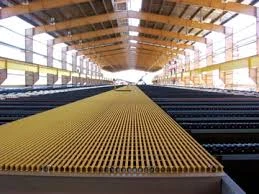
-
 Afrikaans
Afrikaans -
 Albanian
Albanian -
 Amharic
Amharic -
 Arabic
Arabic -
 Armenian
Armenian -
 Azerbaijani
Azerbaijani -
 Basque
Basque -
 Belarusian
Belarusian -
 Bengali
Bengali -
 Bosnian
Bosnian -
 Bulgarian
Bulgarian -
 Catalan
Catalan -
 Cebuano
Cebuano -
 China
China -
 China (Taiwan)
China (Taiwan) -
 Corsican
Corsican -
 Croatian
Croatian -
 Czech
Czech -
 Danish
Danish -
 Dutch
Dutch -
 English
English -
 Esperanto
Esperanto -
 Estonian
Estonian -
 Finnish
Finnish -
 French
French -
 Frisian
Frisian -
 Galician
Galician -
 Georgian
Georgian -
 German
German -
 Greek
Greek -
 Gujarati
Gujarati -
 Haitian Creole
Haitian Creole -
 hausa
hausa -
 hawaiian
hawaiian -
 Hebrew
Hebrew -
 Hindi
Hindi -
 Miao
Miao -
 Hungarian
Hungarian -
 Icelandic
Icelandic -
 igbo
igbo -
 Indonesian
Indonesian -
 irish
irish -
 Italian
Italian -
 Japanese
Japanese -
 Javanese
Javanese -
 Kannada
Kannada -
 kazakh
kazakh -
 Khmer
Khmer -
 Rwandese
Rwandese -
 Korean
Korean -
 Kurdish
Kurdish -
 Kyrgyz
Kyrgyz -
 Lao
Lao -
 Latin
Latin -
 Latvian
Latvian -
 Lithuanian
Lithuanian -
 Luxembourgish
Luxembourgish -
 Macedonian
Macedonian -
 Malgashi
Malgashi -
 Malay
Malay -
 Malayalam
Malayalam -
 Maltese
Maltese -
 Maori
Maori -
 Marathi
Marathi -
 Mongolian
Mongolian -
 Myanmar
Myanmar -
 Nepali
Nepali -
 Norwegian
Norwegian -
 Norwegian
Norwegian -
 Occitan
Occitan -
 Pashto
Pashto -
 Persian
Persian -
 Polish
Polish -
 Portuguese
Portuguese -
 Punjabi
Punjabi -
 Romanian
Romanian -
 Russian
Russian -
 Samoan
Samoan -
 Scottish Gaelic
Scottish Gaelic -
 Serbian
Serbian -
 Sesotho
Sesotho -
 Shona
Shona -
 Sindhi
Sindhi -
 Sinhala
Sinhala -
 Slovak
Slovak -
 Slovenian
Slovenian -
 Somali
Somali -
 Spanish
Spanish -
 Sundanese
Sundanese -
 Swahili
Swahili -
 Swedish
Swedish -
 Tagalog
Tagalog -
 Tajik
Tajik -
 Tamil
Tamil -
 Tatar
Tatar -
 Telugu
Telugu -
 Thai
Thai -
 Turkish
Turkish -
 Turkmen
Turkmen -
 Ukrainian
Ukrainian -
 Urdu
Urdu -
 Uighur
Uighur -
 Uzbek
Uzbek -
 Vietnamese
Vietnamese -
 Welsh
Welsh -
 Bantu
Bantu -
 Yiddish
Yiddish -
 Yoruba
Yoruba -
 Zulu
Zulu
fiberglass clarifier system
Understanding Fiberglass Clarifier Systems A Comprehensive Overview
In industrial and municipal wastewater treatment, clarity is key. As pollutants enter treatment facilities, effective methods are required to separate solids from liquids while maintaining operational efficiency. One such innovative solution is the fiberglass clarifier system, a technology that has gained significant traction in various sectors including manufacturing, food processing, and wastewater management. This article delves into the mechanics and benefits of fiberglass clarifier systems, illustrating their importance in modern treatment applications.
What is a Fiberglass Clarifier System?
A fiberglass clarifier system is a type of sedimentation tank designed to separate suspended solids from liquids. The system utilizes the natural process of gravity, allowing heavier particles to settle at the bottom—creating a sludge layer—while clearer effluent rises to the surface and is drawn off. The construction of these systems from fiberglass offers numerous advantages over traditional materials such as steel or concrete.
Advantages of Fiberglass Over Conventional Materials
1. Corrosion Resistance One of the primary advantages of fiberglass is its resistance to corrosive chemicals and environmental conditions. In wastewater treatment, where harsh chemicals may be present, fiberglass maintains structural integrity over time, minimizing maintenance costs and extending lifespan.
2. Lightweight and Easy Installation Fiberglass products are significantly lighter than traditional materials, making them easier to transport and install. This can lead to reduced labor and assembly costs, allowing for a faster deployment of wastewater treatment solutions.
3. Flexibility in Design Fiberglass can be molded into various shapes and sizes, facilitating custom designs tailored to specific site requirements. This adaptability ensures efficient operation in both large municipal facilities and smaller industrial setups.
4. Cost-effectiveness Though the initial investment may be higher than other materials, the long-term savings due to lower maintenance and operational costs often make fiberglass clarifier systems a more economical choice over time.
fiberglass clarifier system

How Does a Fiberglass Clarifier System Work?
The operational principle of a fiberglass clarifier system is relatively straightforward. Wastewater enters the clarifier through an inlet, where it is evenly distributed across the tank. As it flows through, the velocity decreases, allowing solids to settle rapidly to the bottom. The settled solids, known as sludge, are periodically removed from the tank and can be further processed or disposed of.
At the same time, the clearer liquid flows over an adjustable weir at the tank’s surface. This effluent is then directed to further treatment processes or discharged, depending on regulatory requirements. The system also typically includes mechanisms for monitoring performance and ensuring optimal operation.
Applications and Diversity
Fiberglass clarifier systems are versatile and can be employed in various applications. Municipal wastewater treatment plants utilize these systems to ensure compliance with discharge regulations, maintaining surface water quality. Industries such as food and beverage manufacturing rely on fiberglass clarifiers to treat process water and comply with environmental standards.
Moreover, fiberglass clarifiers find usage in stormwater management, where they help prevent flooding and control water quality during heavy rainfall events. Their efficacy in removing suspended solids makes them an attractive option for environmental sustainability initiatives.
Conclusion
As industries and municipalities face increasingly stringent regulations regarding wastewater treatment, innovative solutions like fiberglass clarifier systems offer effective, durable, and cost-efficient alternatives. Their resilience to harsh conditions, combined with ease of installation and adaptability, positions them as a crucial component in the future of water treatment technologies. By investing in such systems, facilities can not only enhance operational efficiency but also contribute to the protection of our water resources and the environment at large.









